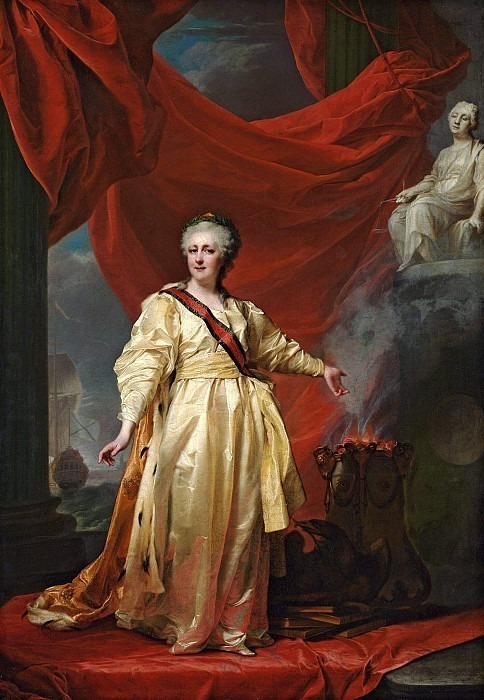Portrait of Catherine II as a legislator in the temple of the goddess of Justice Dmitry Levitsky (Levitzky) (1735-1822)
Dmitry Levitsky – Portrait of Catherine II as a legislator in the temple of the goddess of Justice
Edit attribution
Download full size: 1415×2048 px (0,3 Mb)
Painter: Dmitry Levitsky (Levitzky)
Location: The State Tretyakov Gallery, Moscow (Государственная Третьяковская галерея).
Levitsky painted the painting in 1783. The viewer can imagine the peculiarities of portraiture during the period of classicism. We can understand the peculiarities of the art, its symbolism and allegory. Catherine is in the temple of the goddess of Justice herself. She is burning poppy flowers on a special altar. Instead of a crown, the empress has a laurel wreath on her head. The Order of St. Vladimir suggests That Catherine did much for the country.
Description of the painting "Portrait of Catherine the Great" by Dmitri Levitsky
Levitsky painted the painting in 1783.
The viewer can imagine the peculiarities of portraiture during the period of classicism. We can understand the peculiarities of the art, its symbolism and allegory. Catherine is in the temple of the goddess of Justice herself. She is burning poppy flowers on a special altar. Instead of a crown, the empress has a laurel wreath on her head. The Order of St. Vladimir suggests That Catherine did much for the country. The books that lie at her feet testify to the same. This is the truth.
In this grandiose portrait the main features of Classicism are vividly displayed. First of all, the colors are very saturated. Cold tones dominate here. You can feel the division into several plans in space. The forms are sculptural. They are most restrained and at the same time plastic. The artist skillfully uses the techniques of allegory. We see Catherine dressed in white satin.
Before us a real woman of ancient times. She moves smoothly, and smiles very friendly. This is exactly how a leader of a strong country should be. To create a majestic effect, certain details are used: the carpet is slightly shifted, the pale yellow satin shimmers, and the luxurious ermine mantle is visible.
Levitsky created an image that idealizes Catherine as much as possible. He put into it the idea that the monarch reigns only for the people and lives by the laws that exist in the state.
The content of the painting has a non-portrait character. This brings it closer to the historical paintings of the time. This portrait is allegorical. In order to portray the real sovereign, confirmations in the form of allegories and symbols were necessary. Levitsky strove for authenticity.
Before us is not just a portrait, but an idea. The artist gives a kind of precept to the Empress. This is how the nobility intelligentsia imagined the monarchical power in its ideal form.
Кому понравилось
Пожалуйста, подождите
На эту операцию может потребоваться несколько секунд.
Информация появится в новом окне,
если открытие новых окон не запрещено в настройках вашего браузера.
You need to login
Для работы с коллекциями – пожалуйста, войдите в аккаунт (open in new window).














You cannot comment Why?